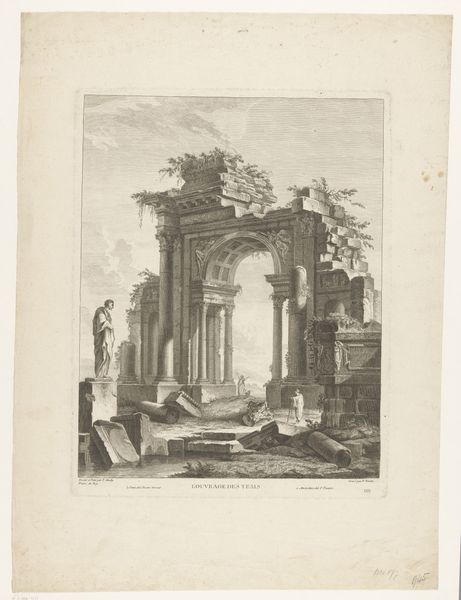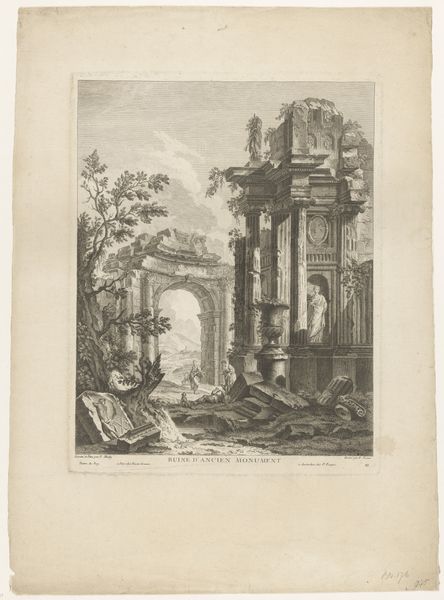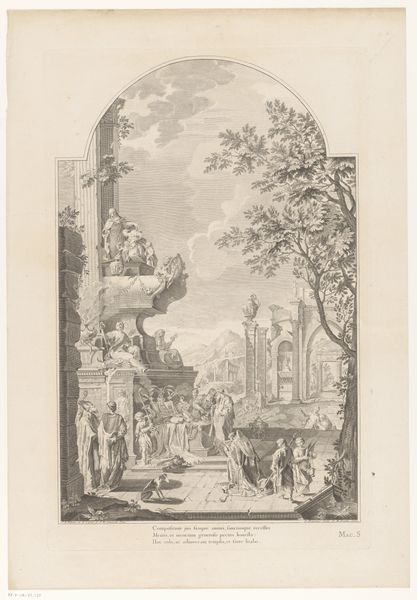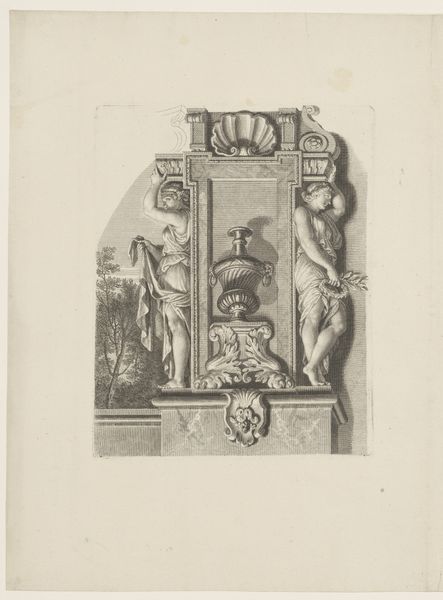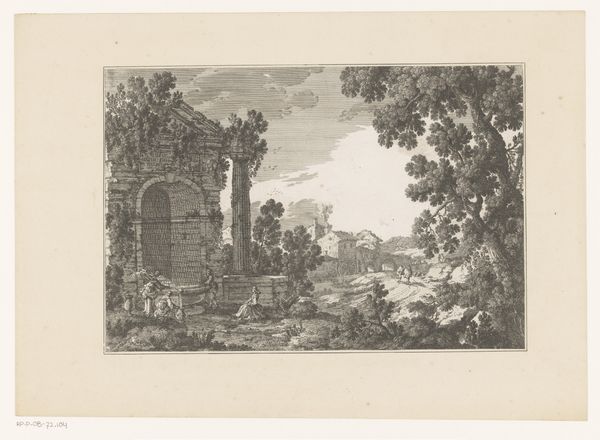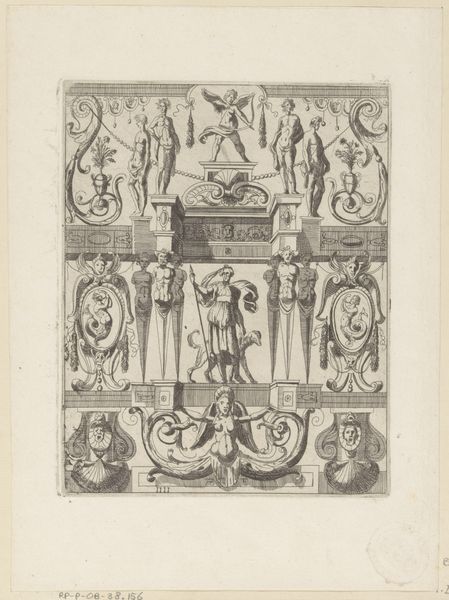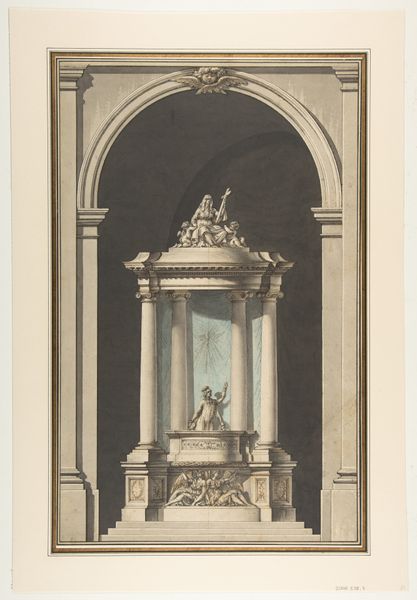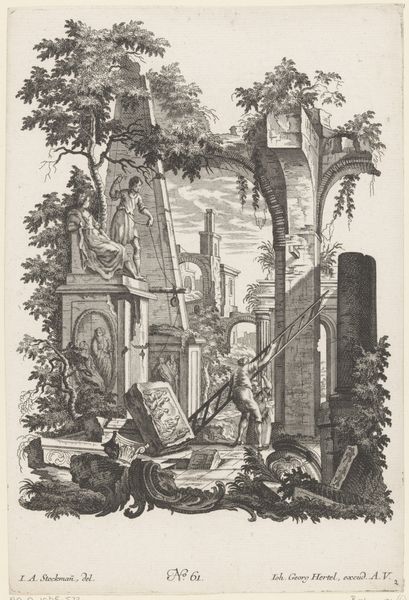
drawing, print, etching, engraving
#
drawing
#
neoclacissism
# print
#
etching
#
old engraving style
#
landscape
#
classical-realism
#
history-painting
#
engraving
Dimensions: height 280 mm, width 231 mm
Copyright: Rijks Museum: Open Domain
Curator: Before us is an etching by L. Pouquet entitled "Gezicht op ruïnes bij Villa Borghese," created sometime between 1774 and 1838. Editor: It immediately strikes me as melancholic. The delicate lines evoke a sense of loss, like faded memories etched onto the paper itself. The composition, with the monument dominating the foreground, amplifies this feeling of somber grandeur. Curator: Pouquet certainly captures that atmosphere effectively. Looking at the neoclassical architecture represented, we see clear signs of the Grand Tour aesthetic influencing its creation. The work invites reflections on the appropriation of the past within the cultural context of that time. Editor: The careful rendering of the light, even in etching, directs my attention through the different segments of this artwork and allows me to engage emotionally and imaginatively with what is rendered on this picture plane. Curator: Indeed. Considering Pouquet's style within the broader history of printmaking, the crisp lines and structured composition showcase a departure from earlier baroque exuberance, embracing instead the more measured elegance that characterized the late 18th and early 19th centuries. We can trace this in other contemporary works of Piranesi and his influence. Editor: It makes you wonder, though, about its purpose beyond a simple document. How were pieces such as these circulated and viewed? Did this aesthetic impact design outside artistic circles? How did this iconography affect or shape society? Curator: Those are important considerations that shed light on this particular landscape within art history. The architectural elements can symbolize themes of the era or specific political figures. The historical circumstances of the engraving significantly shape its current meanings. Editor: The intricate network of lines creates a world tinged with classical austerity, though infused with such fine craftsmanship as to transcend being a mere historical document. The contrast speaks to me as I analyze Pouquet’s arrangement. Curator: Yes, it's where that perfect balance between historical representation and the subjective artistic expression really comes together. It leaves a lasting impression, pondering not only on art but also our historical perceptions.
Comments
No comments
Be the first to comment and join the conversation on the ultimate creative platform.
